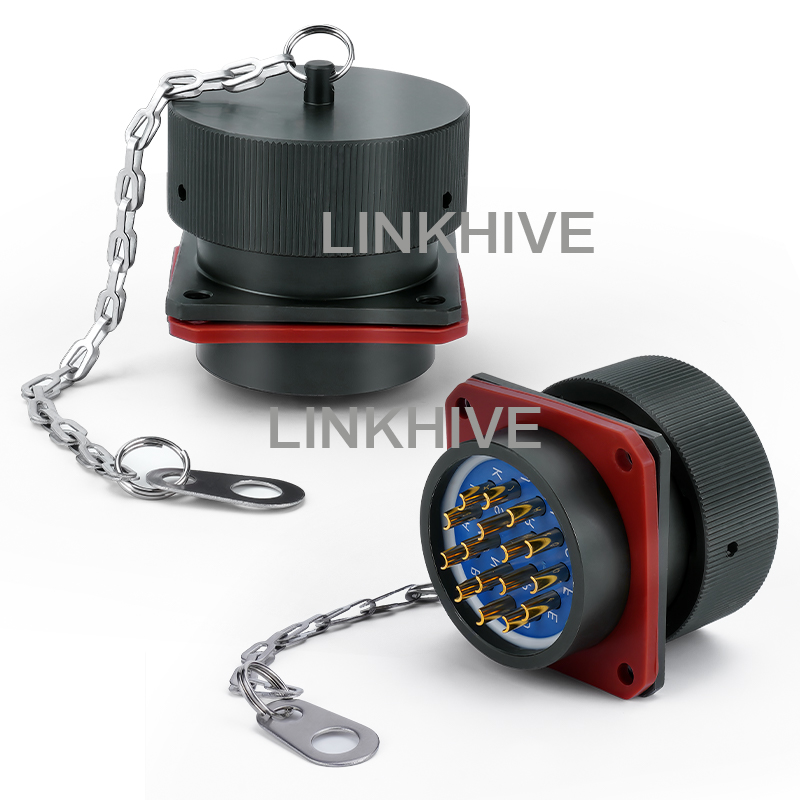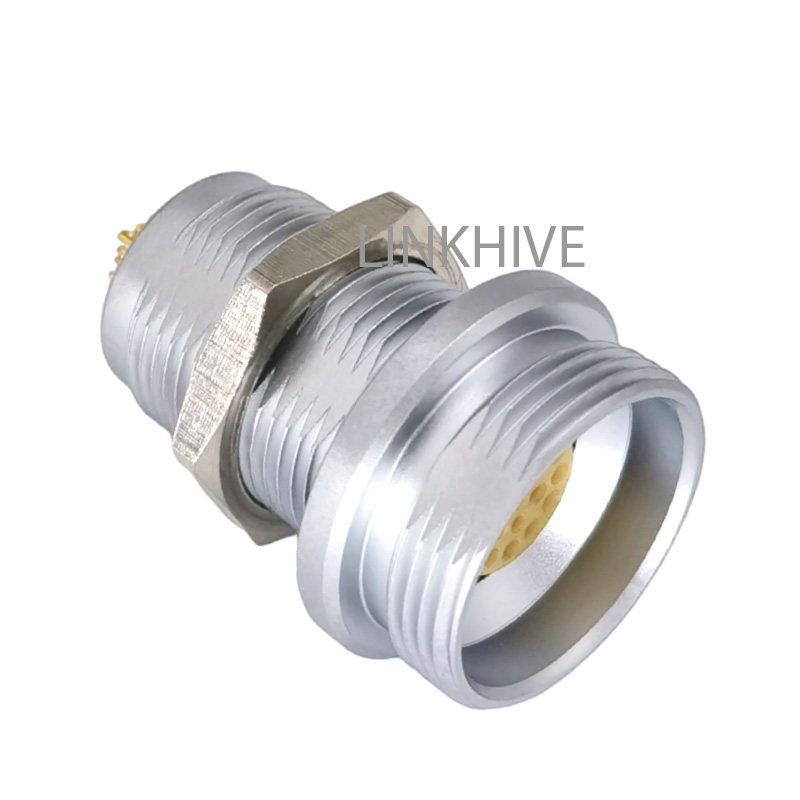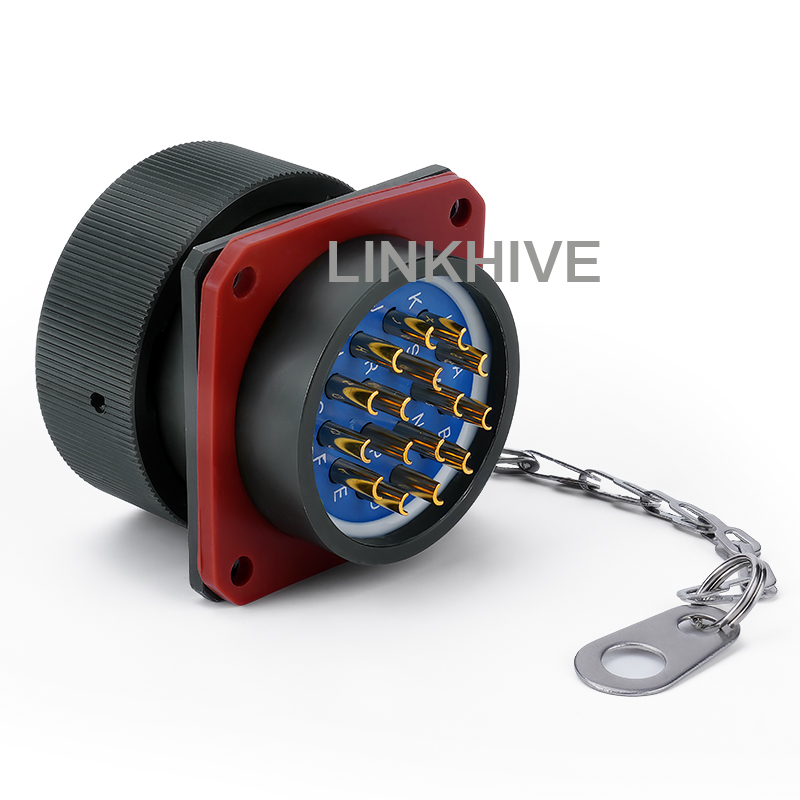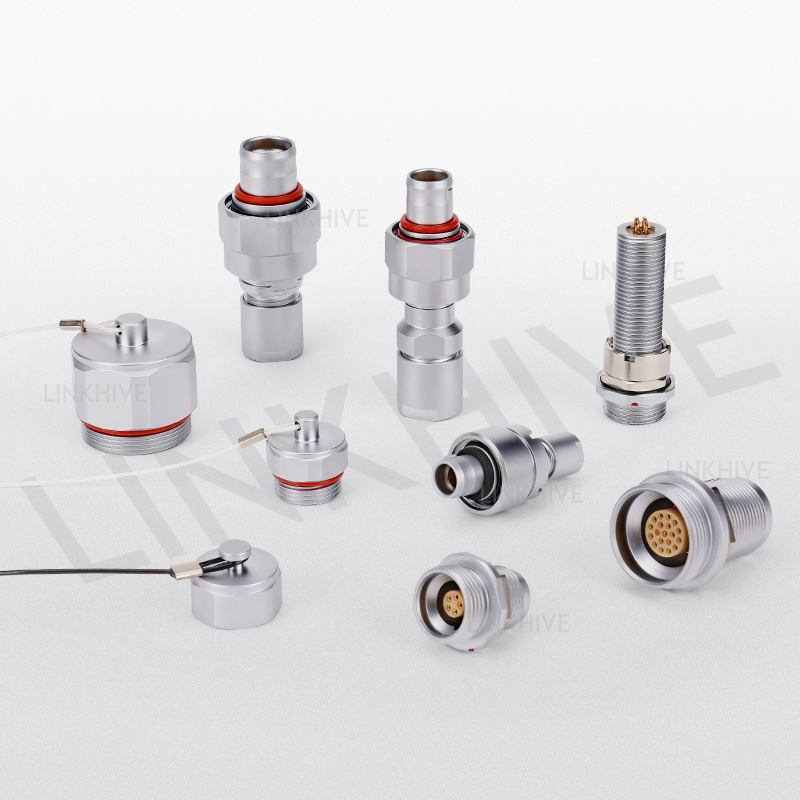In electronic equipment and industrial applications, the choice of connector directly affects the stability, reliability and ease of use of the system. As a key component for connecting electrical and electronic components, connectors play a vital role in various types of equipment. Among the many types of connectors, bayonet connectors) and thread connectors are two common connection methods, and they have their own characteristics in design and application.
What is the difference between bayonet connectors and thread connectors? This article will analyze in detail the design, working principle, advantages and disadvantages of these two connectors, as well as their differences in practical applications, to help users make more appropriate decisions when choosing.
What is a bayonet connector?
A bayonet connector is a connector that uses a bayonet locking mechanism, usually consisting of a plug (male) and a socket (female). The plug part is connected to the socket part by rotating or pushing, and is automatically locked by a built-in snap ring or spring mechanism during the insertion process to ensure a stable connection and avoid loosening under vibration or external force. Bayonet connectors are usually characterized by quick plugging and unplugging and simple operation, and are widely used in scenarios that require frequent plugging and unplugging.
Common types of bayonet connectors include BNC connectors, LC connectors, MIL-C-5015 connectors, etc., all of which use a bayonet design to achieve a stable connection.

What is a thread connector?
A thread connector is an electrical connector that uses a threaded structure to achieve connection. The connecting part of the plug and the socket usually has a threaded structure, and the user needs to complete the connection and locking by rotating the plug and the socket. This connection method can provide a more secure mechanical connection, but it takes more time and effort to connect and disconnect. Thread connectors are widely used in environments that require long-term stable connections and withstand large mechanical loads or high pressure.
Common thread connectors include MIL-DTL-38999, MIL-DTL-26482, Cannon connectors, etc.

What is the difference between bayonet connectors and thread connectors?
Connection method
The connection method of bayonet connectors is based on a bayonet locking mechanism, which is connected by pushing and rotating, and automatically locks during the insertion process. This connection method can achieve quick plugging and unplugging, and can still maintain good connection stability under vibration and external force.
In contrast, thread connectors rely on a threaded structure, and the connecting parts of the plug and socket have precise threads, which are connected by rotating the threads. The plugging and unplugging process of thread connectors is relatively long, and it takes multiple rotations to completely lock or unlock, so its plugging and unplugging process is not as convenient as bayonet connectors.
The connection method of bayonet connectors is suitable for occasions that require fast and frequent plugging and unplugging, while thread connectors are suitable for environments with long-term stable connections.
Plug-in speed and ease of operation
The design of bayonet connectors makes it plug-in and unplug-in fast, and usually only requires simple push-in and rotation to complete the connection and disconnection. Due to its fast operation characteristics, bayonet connectors are very suitable for application scenarios that require fast and replacement of equipment or parts.
In contrast, the plug-in and unplugging process of thread connectors needs to be carried out by rotating the threads, so its plug-in and unplugging speed is slow, especially when it takes multiple rotations to fully contact, the operation time is relatively long.
Bayonet connectors have higher operational convenience and are suitable for application scenarios with fast plug-in and unplugging; thread connectors are suitable for environments that require higher connection stability and mechanical strength, although their operation is more cumbersome.
Stability and shock resistance
Bayonet connectors, due to their bayonet locking mechanism, can maintain a stable connection even when the device is vibrating or subjected to external forces. This self-locking design can effectively prevent the plug from loosening or falling off, thereby ensuring the stable operation of the device.
Thread connectors are connected through a threaded structure, which is generally stronger than bayonet connectors and can withstand greater mechanical loads and pressure. Due to the high friction of threaded connections, it can provide stronger shock resistance and anti-loosening ability, and performs well in environments with high mechanical loads or high vibration requirements.
Thread connectors have stronger shock resistance and anti-loosening ability, suitable for high load or high vibration environments; bayonet connectors perform well in low to medium vibration environments and are suitable for occasions that require quick connection and disconnection.
Sealing performance
Thread connectors can usually provide good sealing through precise thread contact, especially in occasions that require waterproof and dustproof protection. Thread connectors can provide good sealing performance through precise thread combination to prevent the intrusion of external substances.
Bayonet connectors usually have poor sealing properties. Although many bayonet connectors can provide a certain degree of sealing properties through O-rings or protective designs, their protection capabilities are usually not as good as thread connectors because the bayonet design is not as tight as the threaded structure.
Thread connectors provide higher sealing properties and are suitable for environments that require high sealing performance; bayonet connectors are slightly inferior in sealing properties and are usually used in situations that do not require extremely high sealing properties.
Applicable scenarios and applications
Bayonet connectors are widely used in situations that require quick connection and disconnection, such as broadcasting, communication equipment, video surveillance, and test equipment, due to their quick plug-in and easy operation. They are particularly suitable for application environments that require connections to be completed in a short time.
Thread connectors are suitable for environments that require long-term stable operation, anti-seismic and anti-interference, and high pressure resistance due to their high stability, strong seismic resistance, and good sealing properties. They are commonly found in industrial automation, aerospace, military equipment, and other fields.
Bayonet connectors are suitable for applications that require quick connection and disconnection, while thread connectors are suitable for long-term stability and high load situations.

Comparison of the advantages and disadvantages of bayonet connectors and thread connectors
| Features | Bayonet connectors | Thread connectors |
| Connection method | Quick push-in and twist | Rotary thread |
| Plug-in speed | Quick plug-in and pull-out | Slower plugging and unplugging |
| Operation convenience | Simple and convenient | More complicated to operate |
| Stability and shock resistance | Good (suitable for medium vibration environment) | Excellent (suitable for high load and high vibration environment) |
| Sealing performance | Fair, can be improved by sealing ring | Excellent, suitable for occasions with high sealing requirements |
| Application scenarios | Suitable for quick connection and disconnection | Suitable for long-term stable operation and high load environment |
Through a detailed comparison of bayonet connectors and thread connectors, we can draw the following conclusions:
Bayonet connectors are suitable for applications that require frequent plugging and unplugging and quick connection, such as broadcasting, video surveillance, and communication equipment, due to their fast plugging and unplugging, easy operation, and suitability for medium vibration environments.
Thread connectors are suitable for environments that require long-term stable connection, high load, and anti-interference, such as industrial automation, aerospace, and military equipment, due to their high stability, strong shock resistance, and good sealing.

LINKHIVE has been serving global industries with precision connector solutions since 2010. Our product catalog includes more than 2,000 standard items, including Mi-Spec, coaxial, and high-quality molded cable assemblies, designed for applications in aerospace, telecommunications, and medical devices. With a focus on reliability and performance, we offer customized solutions to meet your specific needs. Our affordable prices, low bulk buying rates, and prompt delivery make us a leading connector supplier. Trust LINKHIVE for all your connector needs and enjoy competitive pricing with world-class quality.


